Can You Learn To Do The Splits? Absolutely! At LEARNS.EDU.VN, we believe achieving the splits is possible for most people through consistent practice and the right techniques, unlocking a new level of flexibility and physical accomplishment. We help you discover effective stretches and routines tailored to your body’s needs. Explore our resources for improved flexibility, mobility exercises, and stretching techniques.
1. Understanding the Splits: An Overview
The splits, a feat of flexibility often admired, involve extending your legs in opposite directions, either forward and backward (front split) or to the sides (side split), until your legs form a 180-degree angle. While some individuals seem naturally gifted with the ability to effortlessly drop into a split, the truth is that for most, achieving this impressive range of motion requires dedication, consistent training, and a good understanding of your body.
1.1. What are the Key Muscles Involved in Achieving the Splits?
Several muscle groups play crucial roles in achieving the splits. These include:
- Hamstrings: Located at the back of your thighs, these muscles are essential for leg extension and hip flexibility.
- Hip Flexors: Located at the front of your hips, these muscles allow you to lift your knees and are vital for achieving the front split.
- Groin Muscles (Adductors): Located on the inner thighs, these muscles are critical for opening the legs and achieving the side split.
- Calves: Located at the back of your lower legs, flexible calves contribute to overall leg extension and balance.
1.2. Why is Flexibility Important Beyond Just Doing the Splits?
While achieving the splits might be your primary goal, improved flexibility offers a wide range of benefits that extend far beyond the realm of gymnastics or dance. These include:
- Reduced Risk of Injury: Flexible muscles are less prone to strains, tears, and other injuries.
- Improved Athletic Performance: Increased range of motion allows for more efficient and powerful movements in various sports and activities.
- Better Posture: Flexibility helps maintain proper alignment and reduces muscle imbalances that can lead to poor posture.
- Increased Circulation: Stretching promotes blood flow, which can help reduce muscle soreness and improve overall health.
- Reduced Back Pain: Flexibility in the hips and hamstrings can alleviate tension in the lower back, reducing pain and discomfort.
- Enhanced Daily Life: Improved flexibility makes everyday activities like bending, reaching, and lifting easier and more comfortable.
2. Can Everyone Learn to Do the Splits? Debunking Myths
A common misconception is that some people are simply “born flexible” while others are not. While genetics do play a role in determining your natural flexibility, it’s important to understand that flexibility is also highly trainable.
Thomas Kurz, author of “Stretching Scientifically: A Guide to Flexibility Training,” emphasizes that most people are physically capable of doing the splits. He states that the structure of joints and the length of ligaments are generally not obstacles for the majority of individuals.
2.1. Factors Influencing Your Ability to Achieve the Splits
While most people can improve their flexibility and work towards achieving the splits, several factors can influence your progress:
| Factor | Description |
|---|---|
| Genetics | Determines your natural range of motion and muscle elasticity. |
| Age | Flexibility tends to decrease with age, but consistent training can help maintain and even improve it. |
| Body Structure | Certain structural conditions, like coxa vara, can limit hip rotation and make achieving the splits more challenging. |
| Muscle Tightness | Tight muscles, especially in the hamstrings, hip flexors, and groin, can restrict your range of motion. |
| Training Consistency | Regular and consistent stretching is essential for improving flexibility and achieving the splits. |
| Injury History | Past injuries can affect your flexibility and range of motion. It’s important to consult with a healthcare professional before starting any new exercise program. |

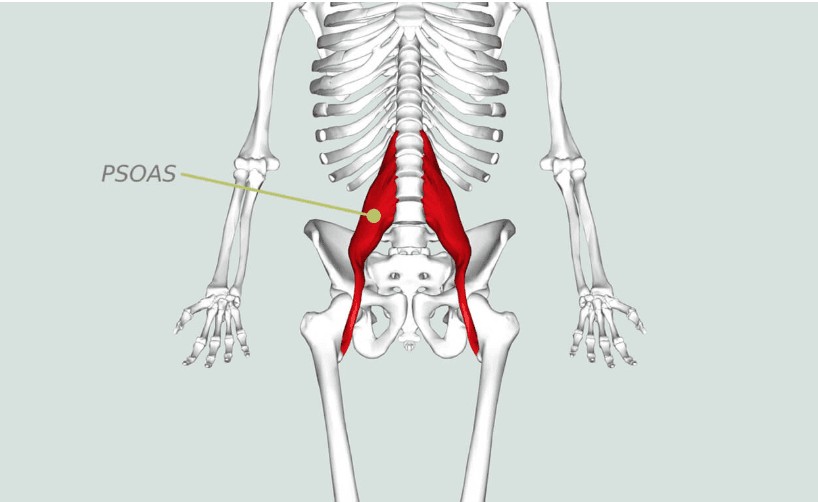
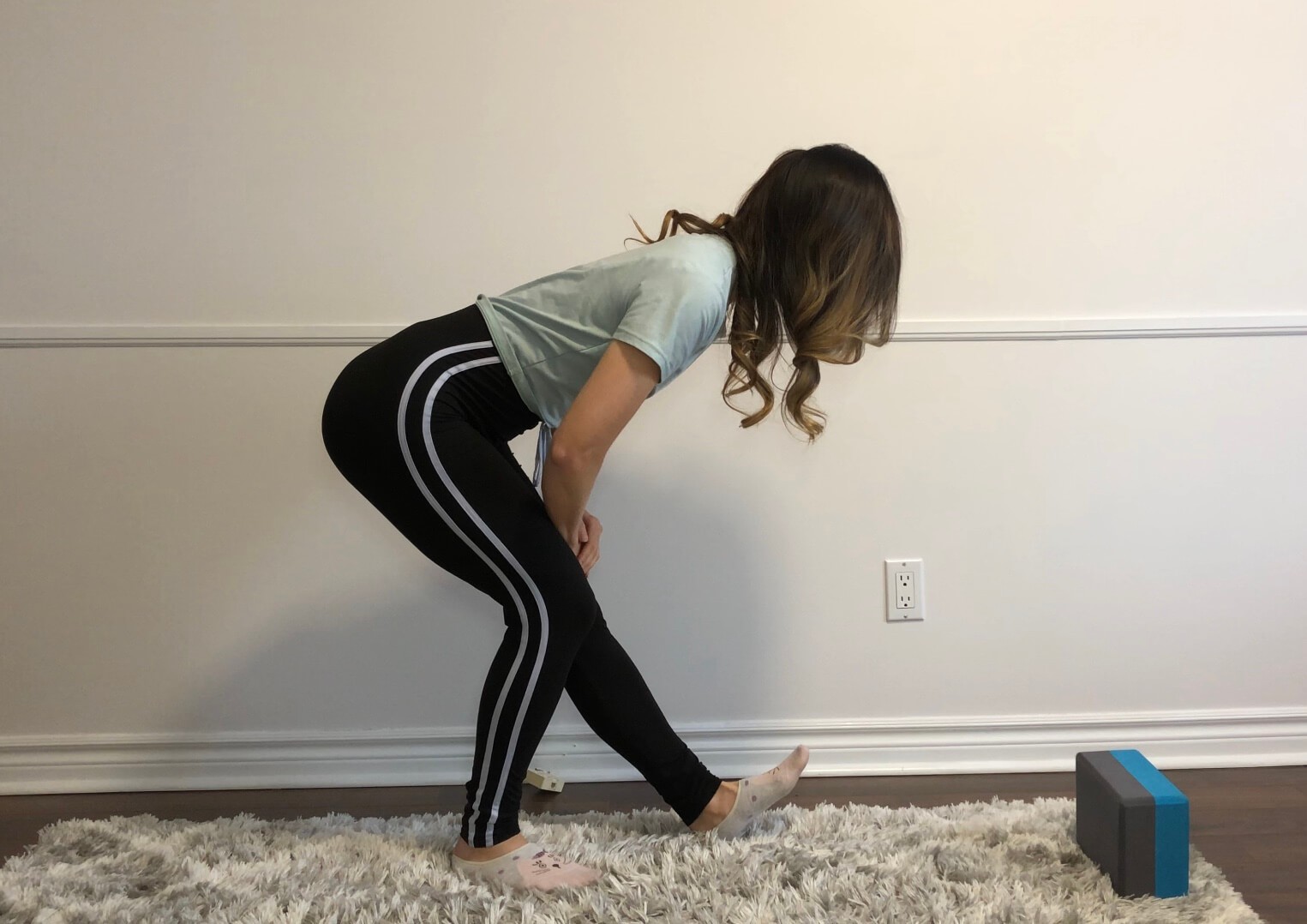
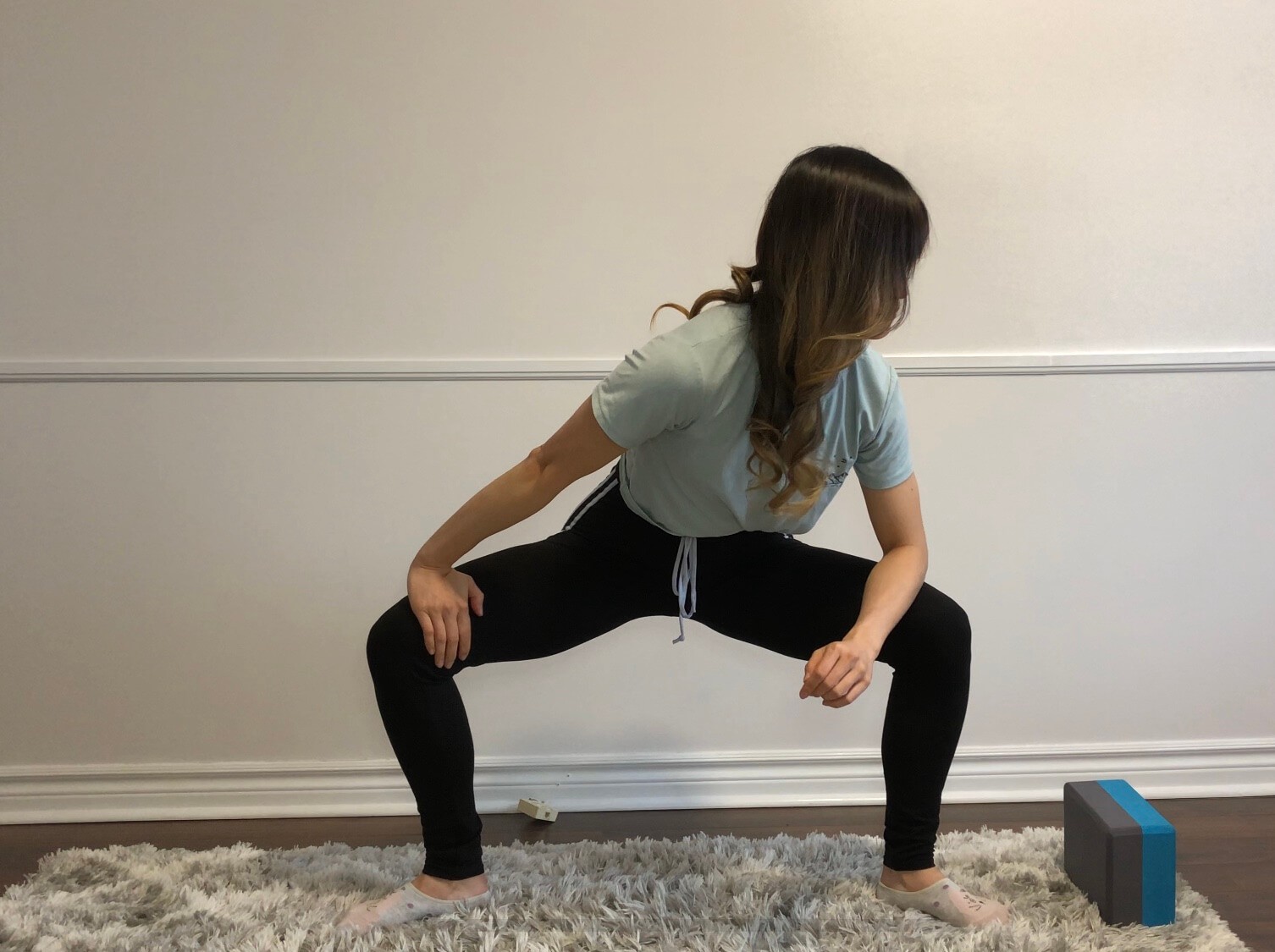

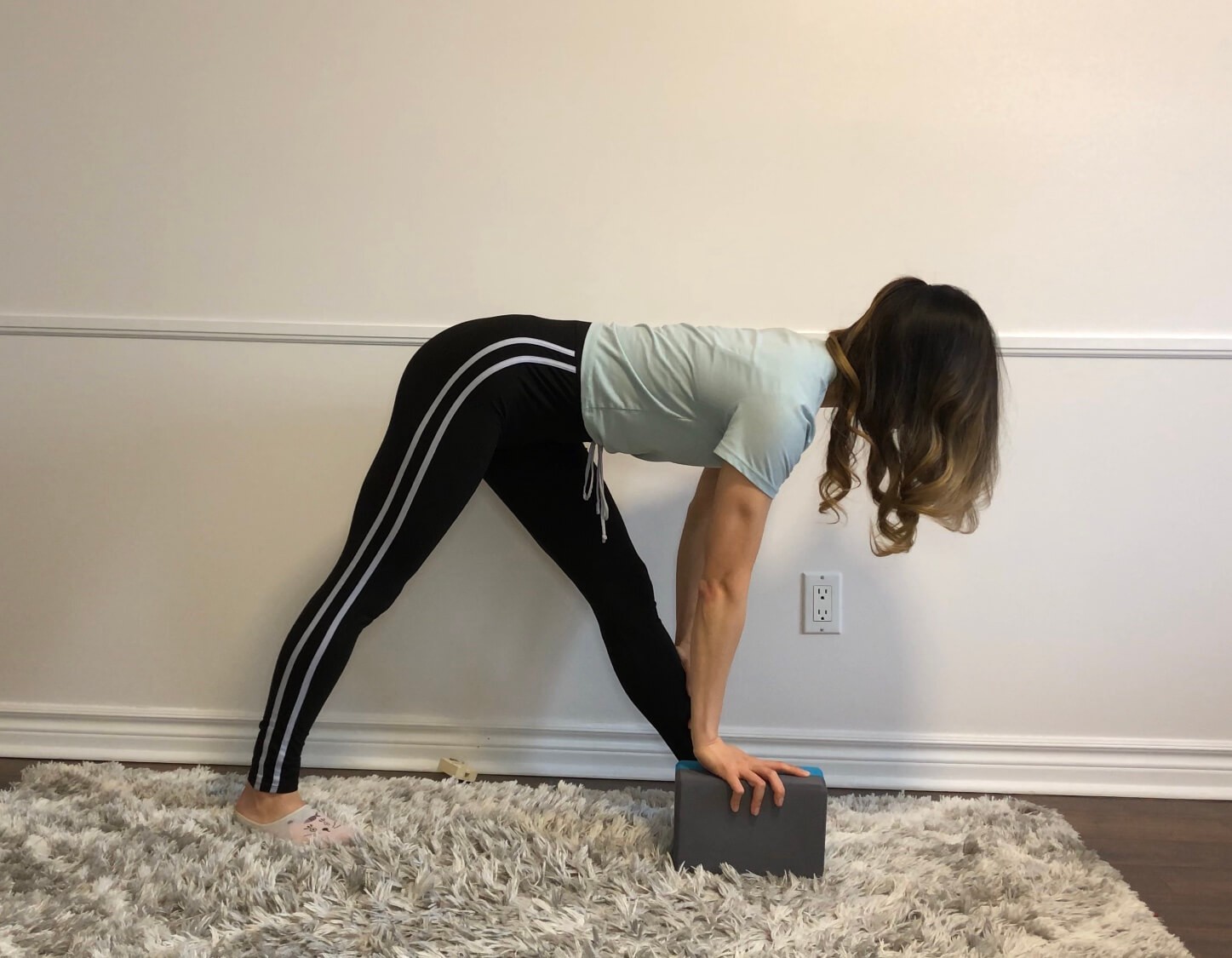
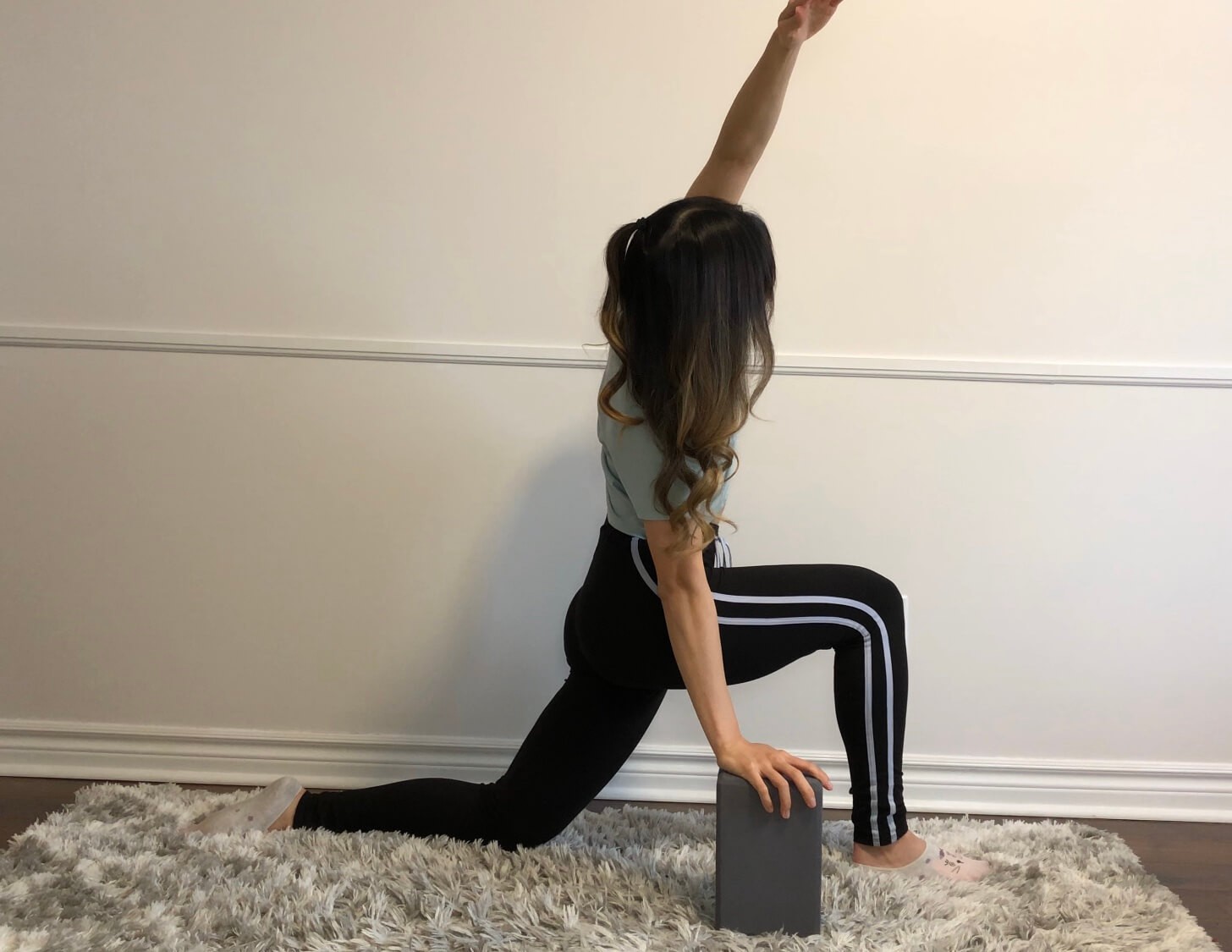
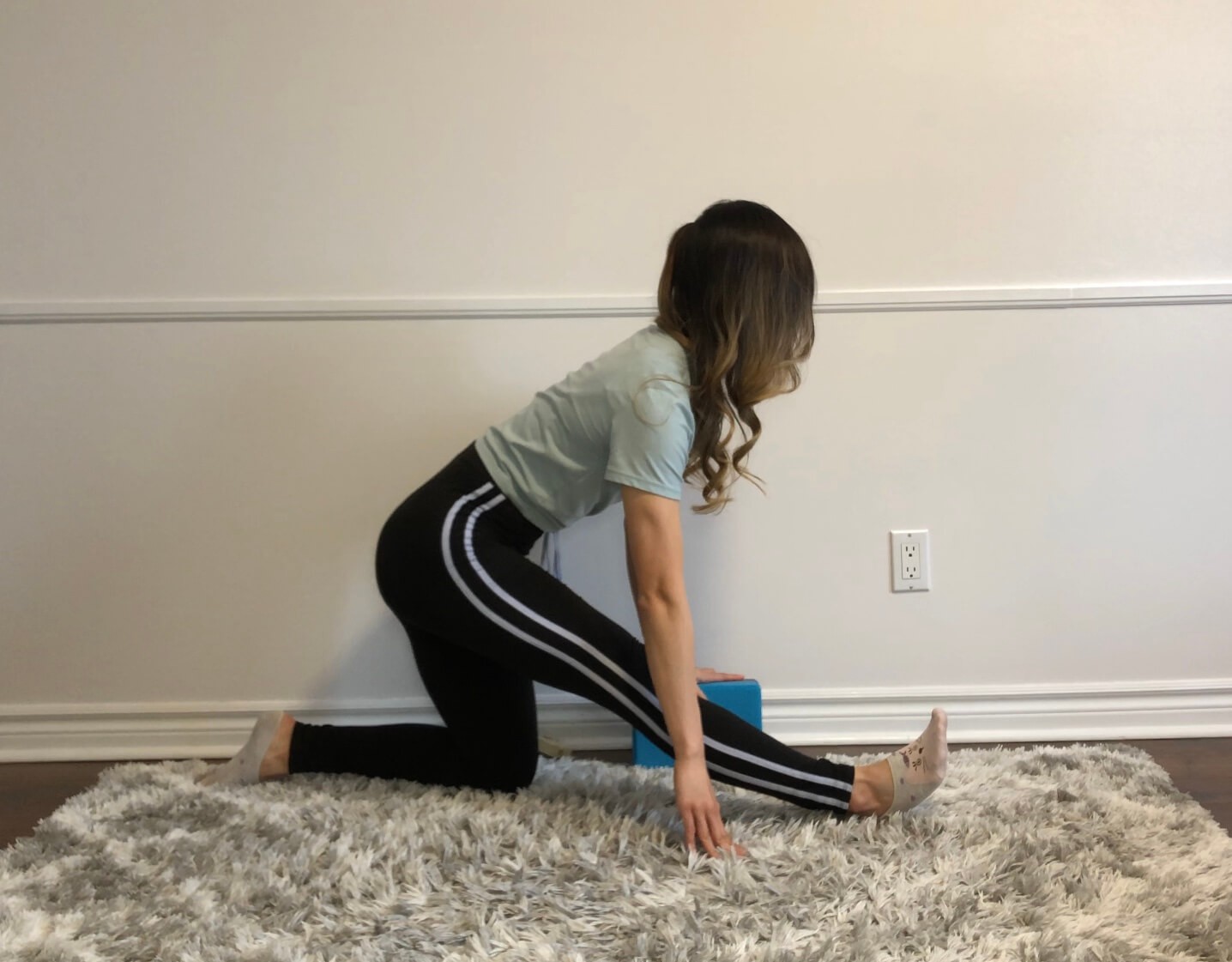
2.2. Coxa Vara and Coxa Valga: Structural Considerations
As mentioned earlier, certain structural conditions can affect your ability to achieve the splits. Coxa vara is a condition where the angle between the head and neck of the femur and its shaft is decreased, limiting hip rotation. Conversely, coxa valga involves an increased angle, potentially making it easier to achieve the splits.
2.3. The Role of Psoas Muscles in Hip Flexibility
Tight or weak psoas muscles can also limit hip rotation. The psoas major, a key hip flexor, connects the lower spine to the femur. When tight, it restricts femur rotation, hindering a true front split. Regular stretching and exercises targeting the psoas can significantly improve hip flexibility.
3. A Simple Test to Assess Your Splits Potential
Before embarking on your splits journey, it’s helpful to assess your current flexibility and identify any potential limitations. This simple test can give you a general idea of your splits potential:
- Stand next to a chair or table that is hip-height.
- Place one leg on the chair or table, ensuring both hips are aligned.
- Repeat on the other leg.
If you can comfortably perform this test, you’ve essentially achieved a “half split” on both sides. This indicates that you have the potential to progress further with consistent training.
Important Note: If you have any pre-existing injuries or concerns, consult with a healthcare professional before attempting any new flexibility exercises.
3.1. Understanding the Limitations of the Test
While this test provides a general indication of your flexibility, it’s important to recognize its limitations:
- It primarily assesses hip flexibility and doesn’t fully evaluate hamstring or groin flexibility.
- It doesn’t account for individual variations in body structure or injury history.
- It’s a static test and doesn’t measure dynamic flexibility, which is important for athletic performance.
3.2. Alternative Assessment Methods
For a more comprehensive assessment of your flexibility, consider consulting with a qualified physical therapist or certified flexibility instructor. They can perform a thorough evaluation and provide personalized recommendations based on your individual needs and goals.
4. Achieving the Splits at Any Age: Dispelling Age-Related Myths
It’s a common belief that flexibility declines with age, making it impossible for older adults to achieve the splits. While it’s true that flexibility tends to decrease as we age, it’s important to understand that it’s still possible to improve flexibility and work towards the splits at any age.
Eiko, the author of “Even the Stiffest People Can Do The Splits,” emphasizes that maintaining flexibility is crucial for overall health and well-being, regardless of age. She notes that stiffness can make everyday activities more challenging.
4.1. How Does Age Affect Flexibility?
As we age, several factors contribute to decreased flexibility:
- Decreased Collagen Production: Collagen, a protein that provides elasticity to connective tissues, decreases with age.
- Reduced Muscle Mass: Muscle mass naturally declines with age, leading to decreased strength and flexibility.
- Joint Stiffness: The cartilage in our joints can become thinner and less flexible over time.
- Sedentary Lifestyle: Lack of physical activity can contribute to muscle tightness and reduced range of motion.
4.2. Strategies for Improving Flexibility at Any Age
Despite these age-related changes, it’s still possible to improve flexibility and work towards the splits at any age. Here are some effective strategies:
- Consistency is Key: Regular stretching is essential for improving flexibility, regardless of age. Aim to stretch at least 3-5 times per week.
- Warm-Up Before Stretching: Warming up your muscles with light cardio or dynamic stretches prepares them for deeper stretching.
- Listen to Your Body: Avoid pushing yourself too hard, especially when starting. Pain is a sign to back off.
- Focus on Proper Form: Stretching with correct form is more effective and reduces the risk of injury.
- Incorporate Flexibility into Your Daily Routine: Find opportunities to stretch throughout the day, even if it’s just for a few minutes at a time.
- Consider Assisted Stretching Techniques: Techniques like yoga or Pilates can provide guidance and support for deeper stretching.
- Consult with a Professional: A physical therapist or certified flexibility instructor can provide personalized recommendations and ensure you’re stretching safely and effectively.
4.3. The Mindset for Success: Patience and Persistence
Achieving the splits takes time and dedication, regardless of age. Be patient with yourself and celebrate small victories along the way. Remember that progress is not always linear, and there will be days when you feel less flexible than others. The key is to stay consistent with your training and maintain a positive mindset.
5. A Beginner-Friendly Stretching Routine for the Splits
This routine focuses on stretching the key muscle groups involved in achieving the splits: calves, hamstrings, and hip flexors. Use yoga blocks to correct your form and protect yourself from injury. Aim to do these stretches 3-6 times a week for optimal results.
5.1. Standing Calf Stretch with Bent Knee
This stretch targets the calf muscles, which are often neglected in splits training. Improving calf flexibility helps straighten the legs and perform advanced stretches.
- Engage your core, step forward with your right leg, and flex your foot.
- Bend your left knee as you hinge forward, keeping your back flat.
- Rest your hand on your leg and focus on flexing your right foot.
- Hold for 20-30 seconds, then repeat on the other side.
5.2. Goddess Stretch
The Goddess pose strengthens the calves, quadriceps, inner thighs, and core. Adding a twist stretches the hips, groins, upper back, and chest.
- Stand with your feet mat-width apart, feet pointing out.
- Bend your knees into a plié position, thighs parallel to the floor.
- Press your right hand on the inside of the knee and twist your shoulders to the left.
- Hold for 20 seconds, then repeat on the other side.
5.3. Wide Leg Forward Fold
This pose stretches the hamstrings and calves, improves blood circulation, and promotes spinal movement.
- Stand with your feet mat-width apart, feet pointing forward.
- Bend forward, reaching your head towards your toes.
- Hold onto a yoga block for support or grab your elbows.
- Hold for 30 seconds.
5.4. Pyramid Stretch
The Pyramid pose stretches the hips, hamstrings, and shoulders, while improving balance and posture.
- Stand with your legs three feet apart. Twist your body and legs to the right, feet pointing right.
- Hinge forward, keeping your back flat.
- Rest your hands on your leg.
- Hold for 30 seconds, then repeat on the other side.
5.5. Low Lunge with Side Stretch
This stretch targets the psoas muscles and muscles deep within the hip flexors, helping keep hips squared during splits.
- Engage your core, step forward with your right leg.
- Lower your hips until the back knee is on the ground.
- Hold a yoga block with your right hand for support, reach your left arm up and over to the right.
- Hold for 20-30 seconds, then repeat on the other side.
5.6. Half Split Hold
This pose stretches the hips, lower back, and legs, elongating the spine and preparing you for the splits.
- Start kneeling, extend your right leg in front of you, flex your foot.
- Keeping your hips square, bend forward with your back flat. Place yoga blocks on both sides for balance.
- Hold for 20-30 seconds, then repeat on the other side.
6. Staying Safe on Your Splits Journey: Avoiding Common Mistakes
While working towards the splits can be a rewarding experience, it’s important to prioritize safety and avoid common mistakes that can lead to injury:
- Skipping the Warm-Up: Stretching cold muscles increases the risk of strains and tears. Always warm up with light cardio and dynamic stretches before attempting deeper stretches.
- Pushing Too Hard, Too Soon: Progress gradually and avoid forcing your body into positions it’s not ready for. Pain is a sign to back off.
- Bouncing During Stretches: Bouncing can trigger the stretch reflex, causing muscles to contract and increasing the risk of injury. Hold stretches statically for optimal results.
- Holding Your Breath: Breathe deeply and evenly throughout each stretch. Holding your breath can increase tension and reduce blood flow to the muscles.
- Ignoring Pain: Pain is a signal that something is wrong. Stop stretching immediately if you experience sharp or intense pain.
- Comparing Yourself to Others: Everyone progresses at their own pace. Focus on your own journey and celebrate your individual achievements.
- Neglecting Other Muscle Groups: Flexibility is not just about stretching. Strengthening the muscles that support your joints can improve stability and prevent injuries.
6.1. Recognizing the Signs of Overstretching
It’s important to be able to recognize the signs of overstretching and take appropriate action:
- Sharp, Sudden Pain: This is a clear indication that you’ve pushed yourself too far.
- Muscle Spasms: Involuntary muscle contractions can occur when muscles are overstretched or fatigued.
- Joint Pain: Pain in the joints can indicate that you’re putting too much stress on the ligaments and tendons.
- Numbness or Tingling: This can be a sign of nerve compression, which can occur if you’re stretching too deeply.
- Delayed Onset Muscle Soreness (DOMS): While some soreness is normal after stretching, excessive soreness that lasts for more than 24-48 hours can indicate overstretching.
6.2. Seeking Professional Guidance
If you’re unsure about proper stretching techniques or have any concerns about your flexibility, consult with a qualified physical therapist or certified flexibility instructor. They can provide personalized guidance and ensure you’re stretching safely and effectively.
7. Enhance Your Splits Training With These Exercises
To make progress in your splits training, you can incorporate specific exercises that complement your stretching routine. These exercises focus on strengthening the muscles involved in flexibility and stability.
| Exercise | Description | Benefit |
|---|---|---|
| Hip Flexor Strengthening | Exercises like leg raises, marching, and mountain climbers target the hip flexors, improving their strength and flexibility. | Strengthens the hip flexors, which are essential for achieving the front split. |
| Hamstring Strengthening | Exercises like hamstring curls, deadlifts, and glute bridges strengthen the hamstrings, supporting leg extension and stability. | Strengthens the hamstrings, contributing to leg extension and balance during splits. |
| Groin Strengthening | Exercises like sumo squats, lateral lunges, and butterfly stretches strengthen the groin muscles, improving their ability to open the legs. | Strengthens the groin muscles, which are crucial for opening the legs and achieving the side split. |
| Core Stability | Exercises like planks, Russian twists, and bird dogs improve core strength and stability, helping maintain balance and control during stretching and splits training. | Improves core stability, providing balance and control during stretching and splits training, reducing the risk of injury. |
7.1 Incorporating Proprioceptive Training
Proprioception is your body’s ability to sense its position and movement in space. Enhancing proprioception can improve balance, coordination, and overall body awareness, which are crucial for achieving and maintaining the splits.
- Balance Exercises: Standing on one leg, using a wobble board, or practicing yoga poses that challenge balance can improve proprioception.
- Coordination Drills: Activities like agility ladder drills, jump rope, and dance can enhance coordination and body awareness.
- Mindful Movement: Paying attention to your body’s sensations during stretching and exercises can improve your ability to sense your position and movement.
7.2 Progressive Overload
Progressive overload is a fundamental principle of strength training that involves gradually increasing the demands on your muscles over time. This can be applied to flexibility training by gradually increasing the intensity or duration of your stretches.
- Increasing Stretch Duration: Gradually increase the amount of time you hold each stretch, starting with 20-30 seconds and working up to 1-2 minutes.
- Increasing Stretch Intensity: Gradually deepen your stretches by moving further into the pose or using props like yoga blocks to increase the range of motion.
- Adding Resistance: Use resistance bands or light weights to add resistance to your stretches, challenging your muscles and improving their flexibility.
8. The Power of Visualization and Mental Imagery
Visualization and mental imagery can be powerful tools for enhancing your flexibility and achieving the splits. By mentally rehearsing the movements involved in the splits, you can improve your muscle memory and coordination.
8.1. How to Use Visualization Effectively
- Create a Vivid Mental Image: Imagine yourself performing the splits with perfect form and ease. Visualize every detail, from the position of your legs to the feeling of your muscles stretching.
- Engage Your Senses: Involve all your senses in your visualization. Imagine the sounds of your breath, the feeling of the floor beneath you, and the sights of your surroundings.
- Practice Regularly: Dedicate a few minutes each day to visualizing your splits. The more you practice, the more effective it will become.
- Use Positive Affirmations: Repeat positive statements to yourself, such as “I am flexible,” “I can achieve the splits,” and “I am strong and capable.”
8.2. Combining Visualization with Physical Practice
Visualization is most effective when combined with physical practice. Use visualization to prepare your mind and body before each stretching session.
- Visualize Before Stretching: Spend a few minutes visualizing your splits before you begin your stretching routine.
- Visualize During Stretching: Focus on your mental image as you perform each stretch.
- Visualize After Stretching: Visualize yourself performing the splits after you’ve completed your stretching routine.
9. The Role of Nutrition and Hydration in Flexibility
Proper nutrition and hydration play a crucial role in maintaining flexibility and supporting your splits training.
9.1. Key Nutrients for Flexibility
- Protein: Protein is essential for muscle repair and growth.
- Collagen: Collagen is a protein that provides elasticity to connective tissues.
- Omega-3 Fatty Acids: Omega-3 fatty acids reduce inflammation and support joint health.
- Vitamin C: Vitamin C is an antioxidant that protects against muscle damage.
- Magnesium: Magnesium supports muscle function and relaxation.
9.2. Staying Hydrated for Optimal Flexibility
Dehydration can reduce muscle elasticity and increase the risk of injury. Drink plenty of water throughout the day, especially before, during, and after stretching.
9.3. Foods That Support Flexibility
| Food | Nutrient | Benefit |
|---|---|---|
| Fatty Fish | Omega-3 Fatty Acids | Reduces inflammation and supports joint health. |
| Berries | Vitamin C, Antioxidants | Protects against muscle damage. |
| Nuts & Seeds | Magnesium, Vitamin E | Supports muscle function and protects against cell damage. |
| Leafy Greens | Vitamin K, Calcium | Supports bone health and muscle function. |
| Bone Broth | Collagen, Amino Acids | Provides building blocks for connective tissue and reduces inflammation. |
10. Long-Term Maintenance: Keeping Your Splits for Life
Achieving the splits is a significant accomplishment, but it’s important to maintain your flexibility over the long term.
10.1. Incorporating Flexibility into Your Lifestyle
- Make Stretching a Habit: Incorporate stretching into your daily routine, even if it’s just for a few minutes at a time.
- Stay Active: Regular physical activity helps maintain muscle flexibility and joint mobility.
- Listen to Your Body: Pay attention to your body’s signals and adjust your training accordingly.
- Be Patient: Flexibility is an ongoing process. Don’t get discouraged if you experience setbacks.
10.2. Adapting Your Training as You Age
As you age, you may need to adjust your training to accommodate changes in your body.
- Reduce Intensity: Reduce the intensity of your stretches if you experience pain or discomfort.
- Focus on Gentle Movements: Focus on gentle, controlled movements rather than deep stretches.
- Consult with a Professional: Consult with a physical therapist or certified flexibility instructor for personalized guidance.
Achieving the splits is a journey that requires dedication, consistency, and a good understanding of your body. With the right training, mindset, and lifestyle habits, you can unlock your flexibility potential and achieve this impressive feat at any age.
Ready to take your flexibility to the next level? Visit LEARNS.EDU.VN today to discover a wealth of resources, including detailed guides, expert advice, and personalized training programs designed to help you achieve your splits goals safely and effectively.
Contact us:
- Address: 123 Education Way, Learnville, CA 90210, United States
- WhatsApp: +1 555-555-1212
- Website: learns.edu.vn
FAQ: Your Questions About Learning the Splits Answered
1. Is it possible for a completely inflexible person to learn the splits?
Yes, with consistent training and the right techniques, even someone who is completely inflexible can improve their flexibility and work towards achieving the splits. It may take more time and effort, but it is definitely possible.
2. How long does it typically take to learn the splits?
The time it takes to learn the splits varies depending on individual factors such as age, genetics, and training consistency. For some, it may take weeks or months, while for others, it may take months or even years.
3. What are the best stretches for learning the front split?
Effective stretches for the front split include hamstring stretches (such as seated forward fold and standing toe touches), hip flexor stretches (such as lunges and kneeling hip flexor stretch), and calf stretches (such as standing calf stretch and downward-facing dog).
4. What are the best stretches for learning the side split?
Effective stretches for the side split include groin stretches (such as butterfly stretch and seated straddle stretch), inner thigh stretches (such as lateral lunges and sumo squats), and hamstring stretches.
5. Is it safe to learn the splits on my own, or should I seek professional guidance?
While it is possible to learn the splits on your own, it is generally recommended to seek guidance from a qualified physical therapist or certified flexibility instructor, especially if you have any pre-existing injuries or concerns. A professional can provide personalized recommendations and ensure you are stretching safely and effectively.
6. What are some common mistakes to avoid when learning the splits?
Common mistakes to avoid include skipping the warm-up, pushing too hard too soon, bouncing during stretches, holding your breath, ignoring pain, and comparing yourself to others.
7. How can I prevent injuries while learning the splits?
To prevent injuries, it is important to warm up before stretching, progress gradually, listen to your body, use proper form, avoid bouncing, breathe deeply, and seek professional guidance if needed.
8. What role does nutrition play in flexibility and learning the splits?
Proper nutrition plays a crucial role in flexibility and learning the splits. Key nutrients include protein, collagen, omega-3 fatty acids, vitamin C, and magnesium. Staying hydrated is also essential for optimal flexibility.
9. Can visualization and mental imagery help with learning the splits?
Yes, visualization and mental imagery can be powerful tools for enhancing flexibility and learning the splits. By mentally rehearsing the movements involved in the splits, you can improve your muscle memory and coordination.
10. How can I maintain my splits once I have achieved them?
To maintain your splits, it is important to incorporate flexibility into your lifestyle, make stretching a habit, stay active, listen to your body, and be patient. You may also need to adapt your training as you age.